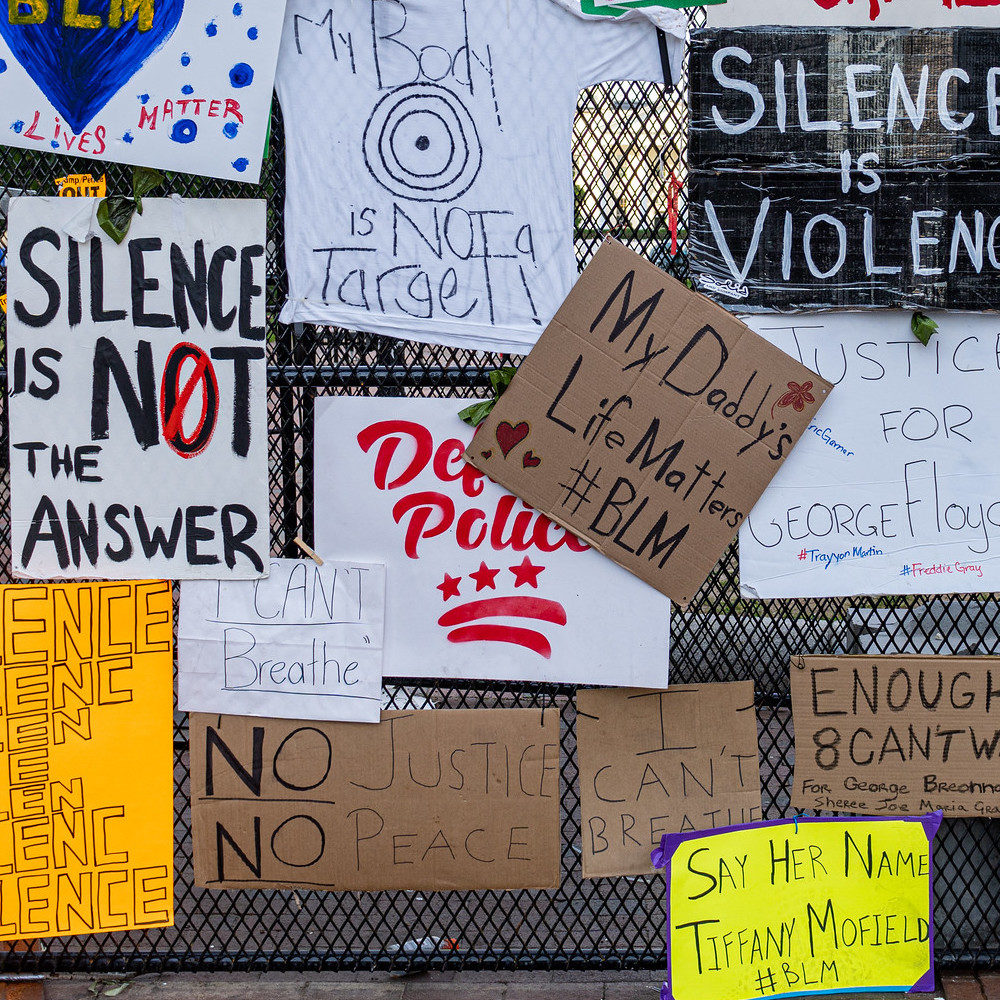
Sonja Sharp, an LA Times reporter, interviewed Deaf people about how they are creating and sharing new signs for this moment of reckoning and recognition. I cued up the story’s video (below) to the point at which Rorri Burton, a Black American Sign Language (ASL) interpreter, shares her perspective:
The sign for “your knee on my neck” is a vivid reminder of Deaf gain, the advantage that people who use a visual language have when expressing ideas. How might we all learn from these powerful communicators? Benjamin Bahan delivered a keynote about this at Stanford Medicine X in 2015:
Another gain for the world: When creative people see a barrier and, instead of being discouraged, take advantage and turn it into an opportunity for expression.
That’s what happened when a new fence was erected to prevent people from entering Lafayette Park, a traditional meeting ground for protest. Or, as Hannah Natanson of The Washington Post wrote: “The White House put up a wall. The people ‘made it beautiful.'”
Featured image: “Black Lives Matter Plaza, Washington, DC, USA” by Ted Eytan.
If you are intrigued by ASL, here’s another story, this time from Frances Stead Sellers in The Washington Post, writing about Carolyn McCaskill’s research into the differences between Black ASL and White ASL.
Video:
https://youtu.be/TXI_B-AuO3A
VERY intrigued by Black ASL. Did the white & Black diverge like any dialect, or did they have different origins, or…?
I think you accidentally used that YouTube URL in the post where you said you cued up it up to Rorri Burton. The article’s video is https://youtu.be/uGxL-o5CsOY and I believe Rorri’s cue-up is at https://youtu.be/uGxL-o5CsOY?t=20
I triple-thank you for drawing attention to this video because Rorri’s explanation of different signs shows how nuance and connotations vary – even within a community (the different senses of “matter,” “black/Black,” “white”) not to mention between communities. I also value the empowered realization that one can create their own new signs or words (her use of the whole hand for Black, vs one finger for the color black).
This is not unlike how we in the patient movement seek to change the connotations people hear for the words patient (passive crash-test-dummy vs active partner with autonomous wants) and consumer (pawn of the system vs informed chooser).
Thanks also for that 2012 WaPo article, which answered my curiosity about origins. Love this quote:
“think of the two signing systems as comparable to American and British English: similar but with differences that follow regular patterns and a lot of variation in individual usage.
“In fact, says Ceil Lucas, one of McCaskill’s co-authors and a professor of linguistics at Gallaudet, Black ASL could be considered the purer of the two forms, closer in some ways to the system that Thomas Hopkins Gallaudet promulgated when he founded the first U.S. school for the deaf — known at the time as the American Asylum for Deaf Mutes — in Hartford, Conn., in 1817.”
btw, I heard somewhere that ASL puns don’t use audible tricks (e.g. your/you’re), they use visual tricks (a playfully wrong hand sign), but all my googling has failed to find evidence.